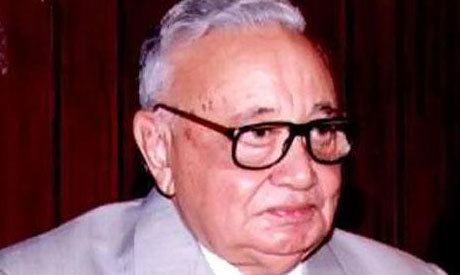Name Tharwat Okasha | Role Writer | |
 | ||
Died February 27, 2012, Cairo, Egypt Books The Muslim Painter and the Divine: The Persian Impact on Islamic Religious Painting | ||
Tharwat Okasha (Arabic: ثروت عكاشة; born 1921) was an Egyptian writer, translator and Minister of Culture during the Nasserite era, Tharwat Okasha, who is referred to as the founder of Egypt’s cultural institutions, died on Monday 27 February 2012 in Cairo. He was 91 years old.
Contents
- His life
- Books and studies
- Translations
- The most important achievements of culture and civilization
- References

His life
Tharwat Okasha (1921–2012) was an army officer involved in the Free Officers Movement, along with former president Nasser and his comrades, which toppled King Farouk of Egypt from his crown in what is known as the 23 July Revolution of 1952.
As a child of an aristocratic family, Okasha received a good education, read books in foreign languages, and learned music very early on in his home. This background made him the most cultured and enlightened officer among his group of army officers.
The intelligent young man, who was known for his rich, ample knowledge, was appointed minister of culture in the late 1950s by President Nasser.
Okasha held the position twice from 1958 to 1962 and, again, from 1966 to 1970. The two terms made him the most prominent minister of culture in Egypt’s modern history.
Okasha received his PhD in literature from Sorbonne in the 1960s and worked as visiting scholar at the College De France.
He published more than 70 books, including his three-volume memoir titled My Memoirs in Politics and Culture, which is considered a rich resource for historians of the Nasserite era; as well as a 38-volume encyclopedia of arts titled The Eye Listens and the Ear Sees.
During his terms in ministerial posts, he founded many cultural institutions that are still functioning and considered major Egyptian landmarks. For example, he founded the High Council for Culture and Arts (now called the Supreme Council for Culture), the Egyptian Book Organisation and, most importantly, the Arts Academy.
Books and studies
- Ancient Egyptian Art: Architecture (1971).
- Ancient Egyptian art: Sculpture and Painting (1972).
- Ancient Egyptian Art: Alexandrian and Coptic Art (1976).
- The Ancient Iraqi Art (1974).
- Religious Islamic and Arab Painting Art(1978).
- Islamic Persian and Turkish Painting Art (1983).
- The Greek Art (1981).
- The Ancient Persian art (1989).
- Renaissance Art: Renaissance, Baroque and Rococo (1988).
- Roman art (1991).
- Byzantine Art (1992).
- Art of the Middle Ages (1992).
- Painting Art in the Islamic Moghol India (1995).
Translations
Dr. Tharwat Okasha had translated books, many, including:
